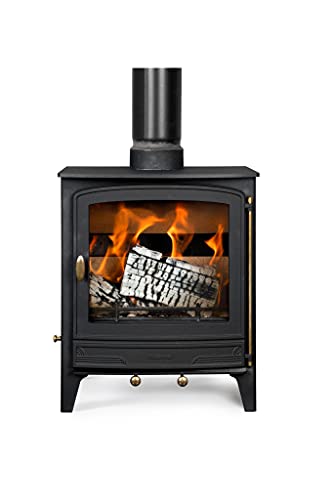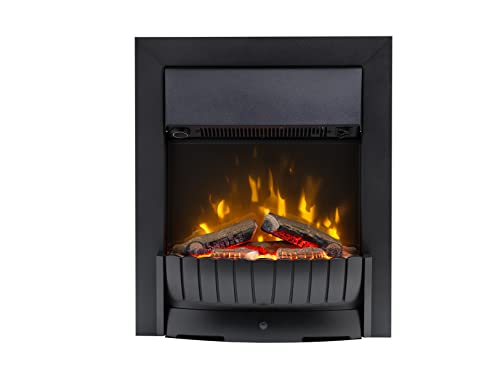The Reasons Bio Ethanol Stove Is More Dangerous Than You Thought
 Bio Ethanol Stove
Bio Ethanol StoveBioethanol stoves don't emit unpleasant odors. The built-in mechanism lets users to shut them off. You should never refuel your bio ethanol fireplace while it is still hot. This could cause the fire to burst.
Ethanol Fireplaces are simple to install in your home or outside. Some models are portable and freestanding.
Cost
A bio ethanol stove can be a great alternative to a wood-burning stove wood burning chimney if you're looking for a way to create real flames in your home, but don't want the hassle. These fireplaces are simple to operate and use a fuel called ethyl alcohol. It's made from biomass (plants and waste) that is processed by distillation and fermentation. This fuel is a green alternative to fossil fuels. It's biodegradable, too, and isn't harmful to the environment.
There are a variety of different types of bio ethanol stoves available, from small portable units, to larger wall-mounted models. Some include a built-in TV stand! It is possible to use ethanol fires in virtually any room. They are a great option for new constructions since they do not require a chimney or a flue. You can also use them in an existing fireplace or open fire and even block the chimney to increase thermal efficiency.
The majority of bioethanol burners operate by storing the fuel in a burner tray, which then produces an ignition when ignited. Certain models have an adjustable mechanism that can be shut and opened to regulate the size of the flame. When the slider is closed, it will extinguish the flame. The device then needs to be filled with bioethanol before the flame can be rekindled.
The cost of running a bio ethanol stove can vary greatly, based on the type and quality of fuel that is used. Cheaper fuels can reduce the cost of running for a short time, but they are more flammable and can quickly run out. This can lead to an increase in the overall cost of running and is why it's recommended to stick to premium fuel.
Installation is another aspect that could affect the price of a fireplace built with bioethanol. If you're installing the stove within an existing fireplace, you must also consider the cost to have it professionally installed and the type of materials used. It will cost more than a freestanding model, which can be moved from room to room.
Energy efficiency
There are a lot of things to consider when you plan to install a bio-ethanol fire place in your home. For instance, you'll have to decide what type of fireplace you want and what size it will be. You'll also need to know whether you're going for a freestanding or wall mounted version. You can also choose a portable version which can be used both indoors and outdoors. If you can narrow down your options, the buying process will be more smooth.
Ethanol stoves make use of biofuels to generate a flame. The fuel is stored in the burner tray and the flame can be lit manually or remotely. Once the flame has started to burn, it can be controlled by a sliding mechanism which can be closed completely to put out the flame or opened to increase the size.
These fireplaces are an excellent choice for homes with no chimneys or flues. They are also easy to install and don't require electricity. They can be moved from room to room and can be used even in an outage of power. They also don't release any ash nor smoke into the air.
Another benefit of bio ethanol fireplaces is their energy efficiency. The burners heat ethanol using an exclusive method to produce a vapor that can be burned. The vapor is then spread throughout the combustion chamber, reducing harmful emissions. In addition the fuel is kept in an insulated tank, which prevents it from getting hot.
The cost of a bio ethanol fireplace is comparable to a kiln-dried log fire or mains gas however, they are a lot cheaper than electric heaters. A litre of fuel should last for around three hours when set to maximum and the fireplace can provide up to 3kW of heat.
In addition to their energy efficient properties Bioethanol fireplaces look attractive since they're constructed of stainless steel or other durable materials. They are also available in various styles and sizes and designs, so you're bound to find one that matches your decor. The greatest thing is that they're movable, so you can take them with you if you relocate your home.
Safety
Ethanol Fireplaces are popular among homeowners who want to have the look of real flame effect but do not have the option of a fireplace in the wall or a gas supply a chimney breast. Bio ethanol fireplaces are not safe, despite being a popular choice. They're extremely flammable and can cause property damage, injuries or even death if they are used incorrectly.
To minimise this risk, there are several precautions you can make when using a bio ethanol stove. It is recommended to keep a distance of 1 meter from the flame, and keep it away from combustible material like curtains. Also, it is important to only use fuel specifically designed for ethanol fires, and to replenish the burner after the fireplace has cool.
Cleaning your fireplace regularly will also increase its security. This will remove any ash or soot that may have accumulated over time. Additionally, it is important to ensure that the fireplace is installed correctly. Keep it clear of combustibles such as curtains, carpets, and furniture.
It is better to use the extinguishing device enclosed to put out the fire before it has consumed all the fuel than to attempt to blow it out. This will prevent you from being burned in the event that the fire starts to flare again.
It's an excellent idea, in case of an emergency, to keep some water close to. If you're accidentally burned by your bio-ethanol fire place, call the fire department immediately.
Bioethanol fires can be considered safe, but they should only serve as an alternative source of heat. They should not be used to cook food or boil water because they can easily cause a fire. They should also not be left unattended as they can pose danger to children and pets.
Ethanol fireplaces don't generate the same amount of pollutant as wood or gas fires, so they are more secure for your home. However, they should be used with caution, especially for homes with young children. They may be tempted by the flames and be seriously hurt if they do.
Environmental impact
Ethanol Fireplaces have been available on the market for some time now and are now common in a lot of businesses and homes. They are also popular as an alternative to traditional wood or gas fires. They are also more mobile than other types of heating, making it easier to move and make use of them in different locations.
Bioethanol is a green fuel that is produced by fermenting sugar and starch from plant by-products such as sugar cane or grain crops. The ethanol is then distilled to make it more refined and increase its alcohol content. This reduces the carbon footprint, which is why it is regarded as an environmentally friendly alternative to gas and electrical fires.
The burning of traditional gas stoves and log burning stoves fires produce a variety of toxic particulates, such as dust, smoke and tar, which can be harmful to health. Bioethanol fires do not produce such particulates. This can be beneficial for people suffering from asthma or allergies.
Unlike other fires, bioethanol fireplaces don't require a chimney or flue in order to function this is a great benefit for homeowners who wish to enjoy the appeal of a fireplace, without having to make structural changes to their property. This means they can be installed in any room and offer a real flame effect without worrying about the mess and maintenance that comes with other types of fires.
A litre of bioethanol could burn for up to 3 hours in a biofire when the flame is at its full power, releasing enough heat to cover an average room size. The amount of heat produced will differ based on the product. It is crucial to check the specifications of the manufacturer.
Use only eNRG liquid alcohol in your biofire. Other fuels could clog up the burner and reduce its performance. Gel fuels are not recommended for use in a bioethanol stove, as they can invalidate the warranty. Gel fuels also contain additives that may affect the safety of your stove and could cause damage.
 5kW Multi Fuel Stove
5kW Multi Fuel Stove A heat powered stove fan is a great method to increase the efficiency of your coal or wood burner and reduce the amount of
A heat powered stove fan is a great method to increase the efficiency of your coal or wood burner and reduce the amount of